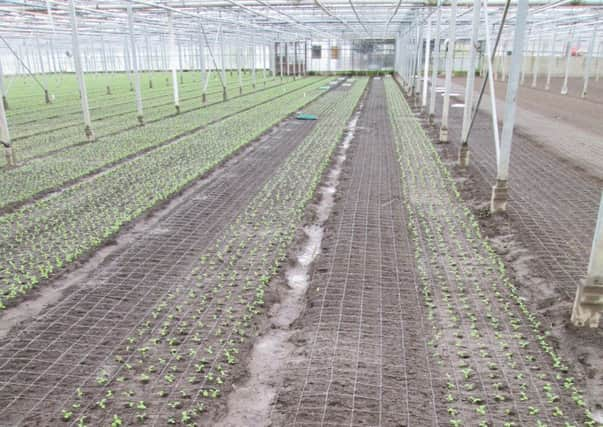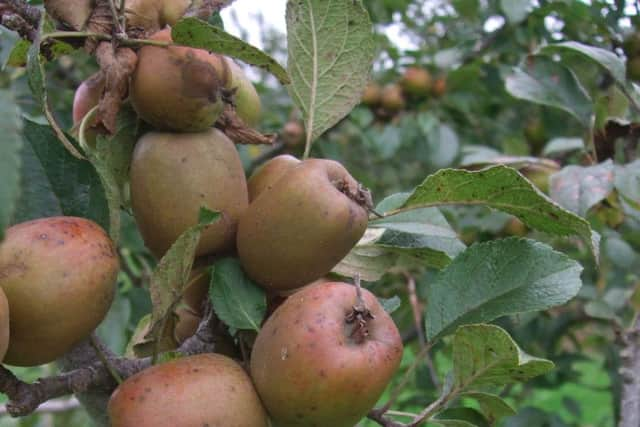DARD Management Notes: Horticulture


It may take another week or two before alleyways are dry enough and the ground sufficiently solid to support a tractor and pulveriser, allowing you to deal with accumulated prunings.
The stormy weather did provide one unusual benefit in more exposed orchard sites. Last autumn’s fallen Bramley leaves were blown away from below the trees by the winds and are no longer a direct source of apple scab spores as temperatures rise and buds break this month. Overwintering spore bodies in leaf litter have always been a serious issue in local orchards. In fact, growers who have recently tried to remove or mulch fallen leaves (as much as is practical) seem to find less scab disease pressure at the start of the growing season. This can be a slow, laborious task but has the great advantage of reducing total fungicide usage.
Advertisement
Hide AdAdvertisement
Hide AdIn 2014 and 2015, spring was marked by at least three weeks of high pressure and exceptionally warm temperatures at some point during March and April. This resulted in exceptionally rapid blossom expansion and leaf emergence. If this happens this year, it is wise to schedule shorter intervals between scab spray applications to ensure good foliar coverage for the time when the weather breaks to rain and scab conditions, as it inevitably will! Highly active systemic products or quality protectants are always worth including in your programme when scab threat is significant.


If you do not receive mobile telephone text alerts (issued when apple scab infection periods are detected at AFBI, Loughgall), please text your details to Graeme Cross, CAFRE Top Fruit Development Adviser on 07717 732 659.
Protected crop planting and preparation techniques: Carry out soil sampling for greenhouse soils annually and outdoor soils every three to four years. The quality of seedbed preparations influences crop establishment for seed sown and module planted crops.
Poor seedbeds are characterised by large clods, areas of compaction, poor drainage and perennial weeds. Large clods affect crop establishment causing bare patches which provide areas for pests, such as slugs, to shelter and weeds to colonise. Planting crops in areas previously under grass will likely have higher populations of slugs and other soil borne pests. One method to reduce the amount of soil borne pests is to lightly roll seedbeds to firm the soil. Rolling also helps greenhouse soils that are regularly cultivated becoming ‘fluffy’. Such seedbeds with a very fine texture reduce root to soil contact that can lead to poor crop establishment.
Advertisement
Hide AdAdvertisement
Hide AdGood seedbed preparation also reduces the amount of weeds in the crop. A few weeks prior to planting, cultivate the soil to encourage weed seed germination. Once the weed seeds germinate control them using a non-residual herbicide. With minimal cultivation plant or sow the crop to ensure new weed seeds are not brought to the surface.


Some outdoor direct sown crops may be treated with residual herbicides to prevent weed seeds germinating. Always check the product label for crop suitability. If using residual herbicides good seedbed preparation, dose rates and timing are important to prevent crop damage. Note chickweed resistance to some sulfonylurea herbicides has been recorded in Northern Ireland for a number of years.